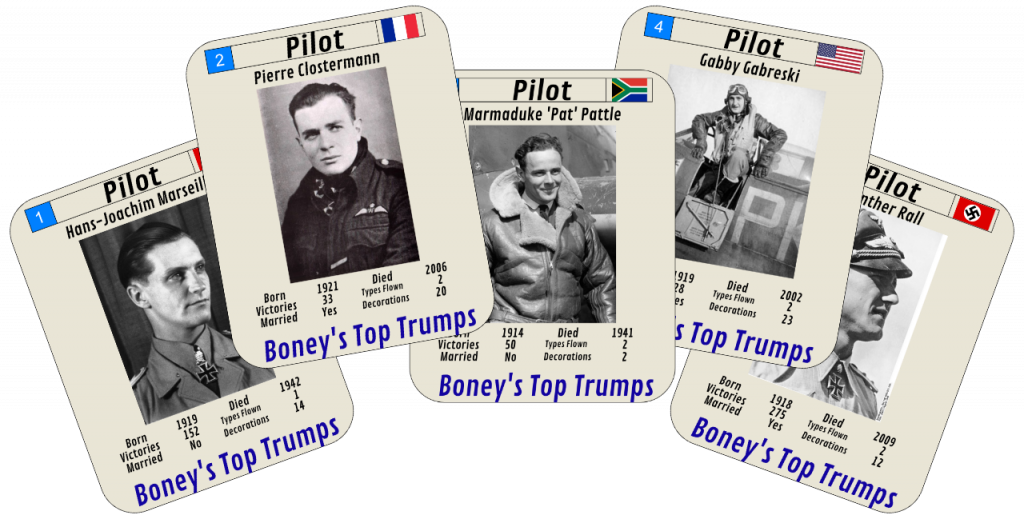
Way back in the day, my good mate Jules used to stay with us regularly. In between mammoth seasons of hot-seat Grand Prix 1, we used to play hours-long games of Fighters and Bombers Top Trumps. One game that sticks in my memory lasted something like five hours, mainly due to the fact we had basically memorised the dog eared cards. The game would also take the form of a debate over whether or not the good folks at Top Trumps actually knew what they were talking about. As teenagers, we, of course, knew better and yes a Spitfire was better than a Bf 109 etc etc etc.
Well over Twenty-odd years later and we live in a listicle dominated world that becomes more binary by the day. Nuance now feels like a dirty word and when we look at things, we seem to rank them by default. When this comes to the equipment of the Second World War, the fetishisation of the machinery has begun to override the basic truth that these incredible machines were designed to kill. This, in turn, creates an odd abstract from those who designed them, those who went to war with them to those who faced them and who perished in and because of them.
With this in mind, I’ve tried to take a couple of those aircraft that cropped up in those Top Trumps and look at one area that was never one of the stats, the pilot. The human element is always the most difficult to quantify, but I hope this rather high-level look at one aspect of the pilot, their training, may make you take pause and think about the men and not just the machine.
By the beginning of the Battle of Britain in the summer of 1940, the RAF and Luftwaffe were fielding the world’s very best fighter aircraft. The RAF had two types of front line point defence fighter that had been designed specifically to fit within The Dowding System. The Hawker Hurricane was very much the next step in Sydney Camm’s continual development of the front line fighter, but one that still owed much to its biplane predecessor, the Fury. The Supermarine Spitfire, on the other hand, was a clean sheet of paper design from a company that had never had a front line fighter purchased. The Spitfire was more forward-looking than the Hurricane, but then Camm, as was his way, already had the Hurricanes successor on its way.
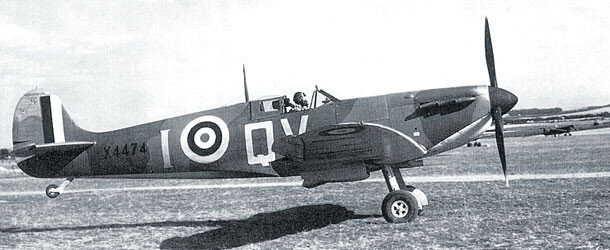
Supermarine Spitfire Mk.I
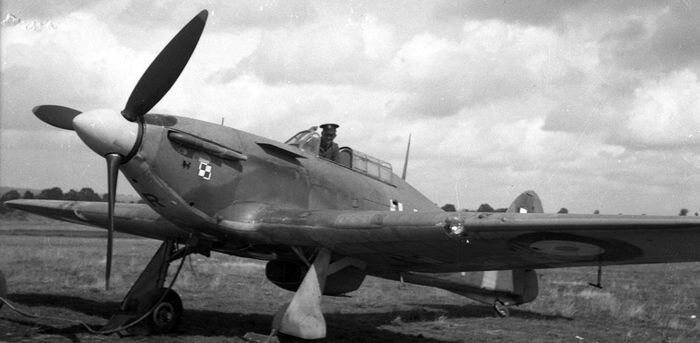
Hawker Hurricane Mk.I
Across the channel, the Luftwaffe had Willy Messerschmitt’s Bf 109 and twin-engine heavy fighter Bf 110. In the Top Trumps world, the Spitfire would be better than the Bf 110 and closely matched with the Bf 109. The Hurricane would be better than the Bf 110 but worse than the Bf 109 in everything but manoeuvrability. Which is slightly disingenuous to the Bf 109 as the E variant deployed in the summer of 1940 was a better-rounded fighter with superb armament, great stalling characteristics flown by superbly trained and experienced crews.
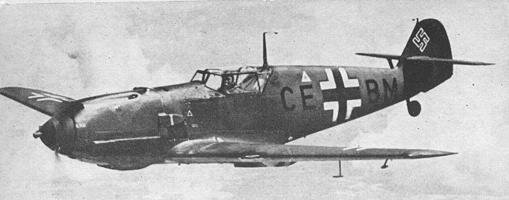
Messerschmitt Bf 109E
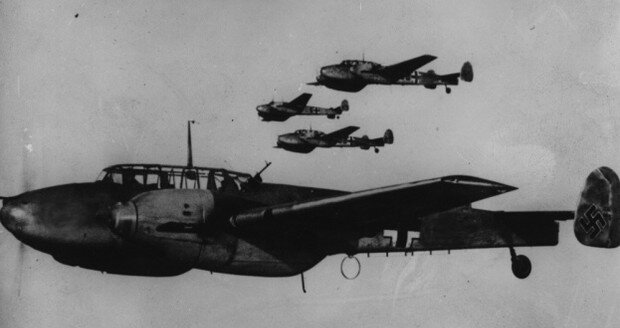
Messerschmitt Bf 110
The Luftwaffe’s pilots had worked their way through various training licences on their way to gaining their wings. They would have had between 100-150 hours of flying training before being assigned to single or dual-engine aircraft. They would then receive further training on type, taking them to around 200 hours. The process would take about a year. The Luftwaffe then had the added benefit that, for a number of their pilots and crews, would be their second conflict and the Battle of Britain their fourth campaign.
The RAF had had a slightly more gentlemanly approach to training but the setup was similar. A prospective cadet pilot would work up through ground schools and elementary training, gaining their wings in about a year with around 150 hours. By the time the Battle of Britain was at its height, time on actual type, either the Spitfire or Hurricane was much lower than ideal. But the RAF, especially in the Hurricane squadrons, had battle experience too. They had been flying, fighting and scrambling back through the Battle of France. The RAF was then bolstered by the determined, battle-hardened Free Poles, Czech, Belgian and French pilots who had made their way to England. Experience is vital, but so too would be where the fighting would take place.
For all of the Bf 109’s strengths, it was being deployed at the limits of its range, with its pilots fighting with one eye on the fuel gauge. It was an air force designed around supporting the Army and being thrown into a strategic rather than tactical role was new for them. Experience here was vital in knowing the aircraft, how far you could push it and still get home. The RAF pilots confronting them would be flying twice as many sorties or more in a day, but these would be sharp slashing attacks over home turf. Quickly, those who survived would gain the experience that would make up for their lack of firepower and the quirks of their engine.
It is here that the experience factor starts catching up and the limitations of the early Spitfire and Hurricane’s performance are squared with operating firmly within the environment for which they were designed. Other factors that need to be considered are attrition and fatigue. The former was proving incredibly hard on the Luftwaffe who had been fighting steadily for a year without let up. While the Luftwaffe did indeed rest their crews where possible, the ability to rotate whole units was limited.
The outcome of the battle was very much that of a boxing match between a boxer and a slugger. The Luftwaffe threw their best punches but the RAF absorbed the pressure and chose the perfect moments to counter-attack.
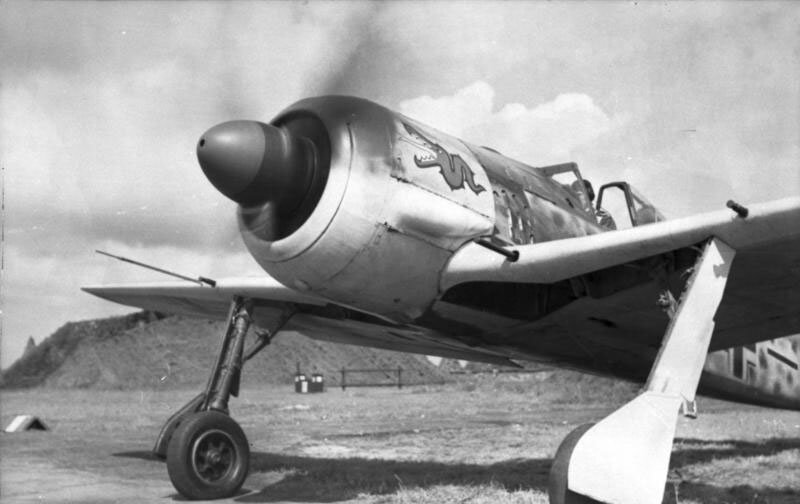
Focke-Wulf Fw 190A-3
If we look forward to 1942, the introduction of Kurt Tank’s incredible Focke-Wulf Fw190 sent shock waves through the RAF and the assembling USAAF. With the Spitfire Mk Vb outclassed, the RAF turned to the underdeveloped and troublesome Hawker Typhoon to counter this fast, highly manoeuvrable fighter while the development of an interim Spitfire, the Mk IX, could be rushed into service while work on the Mk VIII continued. The irony here is layered. The Spitfire Mk V was an interim aircraft as the Mk III wasn’t ready and was replaced by another interim. Little did they know that the Fw190’s was operating re-rated due to chronic issues with its BMW 801 engine.
But by 1942, a sea change in the pilots coming through to frontline units was well underway. The British Commonwealth Air Training Plan was envisioned in 1939 and Canadian Prime Minister William Lyon Mackenzie King knew this was a huge opportunity for Canada to play its part. In late 1939, the agreement between Britain and the Dominions was signed and by the war’s end, 131,553 aircrew had been trained by the program. Add in the pilots going through training programs in the United States, fresh pilots were arriving at Operational Training Units (OTU) in the UK with over 200 hours of training in the wide open and, vitally, combat-free airspaces of North America and Australia.

North American Aviation T-6
Harvard
To take one example of what a new pilot’s experience was like, we have future Typhoon Highest Scoring Ace, Johnny Baldwin. Baldwin had joined the RAF at the outbreak of war, had served in France as an Aircraftman before being accepted for pilot training in the United States. When he was posted to what would go onto be the top Typhoon outfit, 609 ‘West Riding’ Squadron (Baldwin arrived on the 17th November 1942, the same day 609 made their first claims in Typhoon operation), Baldwin would have a whole month of familiarisation time, both with his aircraft and with the squadron, before he flew his first operation on the 15th December, in Typhoon DN365 for the avgeeks among you.
A momentary Tiffy related aside, as is my want. The Hawker Typhoon lacked high altitude performance due to its Sabre engine ‘running out of puff’ above 15,000’ and the aircraft’s thick wing not ideal for a high altitude fighter. In a binary Top Trumps world, this performance deficient would mean it was a sitting duck. But, in the right hands, the Typhoon was more than capable. On the 20th January 1943, Johnny Baldwin (who had only been operational for a month) and 609 Squadron were vectored to intercept 8-12 enemy aircraft over Deal, at a height of 20,000’. They engaged Bf 109 G-4s of 6./JagdGeschwader 26. 3 of the Bf 109s broke off, Baldwin fired at the first two as they crossed in front of him. His shots hit the first Bf 109 in the cockpit and then turning in on the second, scoring hits and the Bf 109 then broke up from the impact of his Typhoon’s 20mm cannon shells, both pilots bailed out.
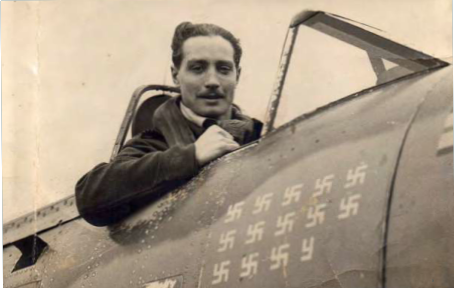
Wing Commander Johnny Baldwin
Looking behind him, Baldwin saw another Bf 109 on his tail, cut his throttle and skidded his Typhoon in a climbing turn, causing the German to overshoot. As the Bf 109 dived toward the clouds, Baldwin got into a firing position, fired and saw hits on the enemy aircraft. As he came out of the cloud, Baldwin saw no sign of the Bf 109 but did see the pilot suspended below their parachute. For his hattrick, Baldwin would be awarded the DFC for this engagement. In the right hands, even an on-paper disadvantage can be used to turn the tables.
By late 1942, the Luftwaffe were heavily engaged on three fronts. In the East, the Luftwaffe were racing forward trying to keep up with the advance deep into Russia. In North Africa and over Malta, they were engaged in bitter fighting as the Allies started to assert themselves. In the West, the RAF’s bombing campaign was starting in earnest, the USAAF had arrived and Fighter Command were wasting their own resources over occupied Europe while trying to counter low-level tip and run attacks from the Luftwaffe. By December 1942, the Luftwaffe had lost 91% of the force they had started the year with. As such, replacements were vitally needed and corners were being cut to the very quick. Hampered by the need for pilots, training was hamstrung further by a lack of fuel and oil as the frontline units were prioritised for these increasingly scarce resources.
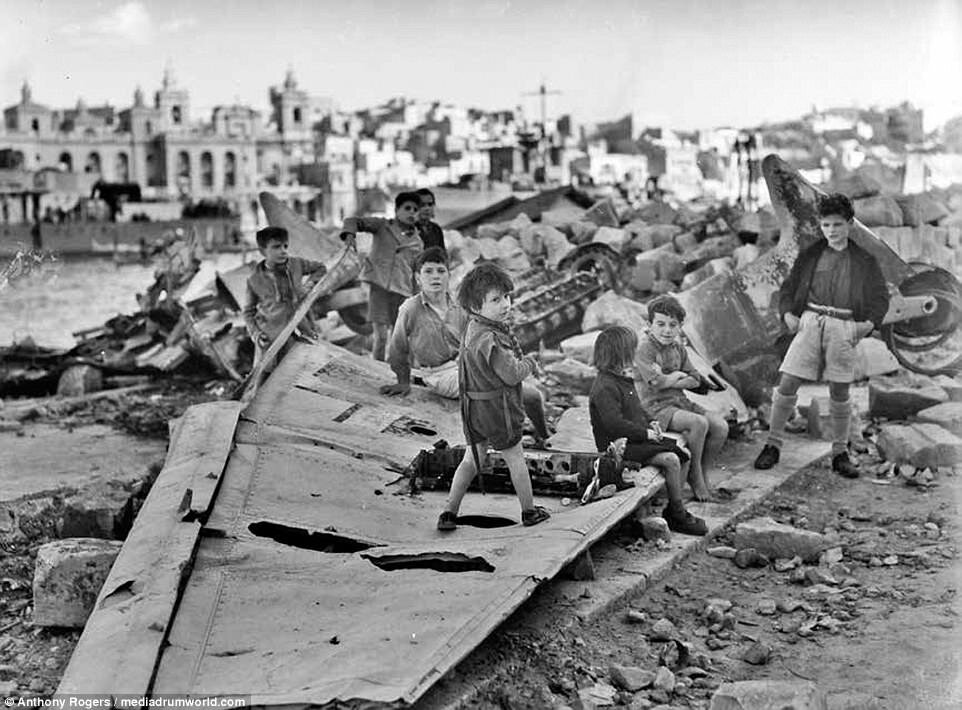
Maltese children playing on the wreckage of a Ju 87 Stuka
By the time of D-Day in June 1944, the training disparity was enormous. RAF pilots would be arriving at their units with around 350 hours of training with, vitally, 100 hours on the type they would be fighting in. The pilots they were going up against in what was left of the Luftwaffe were either battle-hardened veterans or new pilots who were arriving at their units with 150 hours of flying training total and, crucially, with only 20% of the time on type their opponents would have. The material riches of the Allied air forces also meant that their pilots would not be flying every day, so that when they did, they were rested, confident and aggressive. This disparity only increased over the final months of the war.
This is not to say that the Luftwaffe was not a danger, but as an effective fighting force, its day had passed. With Allied fighters now ranging deep into Germany, fighter-bombers roaming at will for anything that moved, that the Luftwaffe continued to fight as long as they did is a remarkable achievement.
An example of the state of the Luftwaffe by early 1945, that admittedly may be an outlier, was that of Canadian Pilot Officer Frank Johnson. Johnson was serving with 174 Squadron RAF and had just completed an air test in his Typhoon when his radio crackled into life. He was told that the controllers ‘had action for’ him. A lone Fw190 had just raced across his home airfield at B.80 Volkel in Holland and Frank was vectored to intercept the bandit. Having a height and speed advantage, Frank quickly caught the Focke-Wulf and as he lined up his gun sight, he noticed that the German aircraft was doing nothing to evade him. Frank didn’t fire. He pulled alongside and saw a terrified kid at the controls. Frank decided “why the hell would I kill this kid? The war is almost over. He doesn’t know what the hell he is doing. So I [waved at him] and flew off”. Frank would have a strip taken off him for not destroying the German aircraft but for the rest of his life, Frank would feel that was “the only thing that I did in that whole goddamn war that I am really pleased about.”
When I told that tale to people who had come to the Hawker Typhoon Preservation Group’s tent at airshows, the usual response from people was ‘he should have shot him down’. To a degree yes, and to another no. Frank had been on ops since August 1944 and did not have a kill to name, but looking into the cockpit of the Fw190, Frank could see a fellow pilot in a situation he had never had to experience. Frank was flying some of the most dangerous missions the RAF would fly but he had been given every chance to survive with his training. The lad in the Fw190 was doing well to stay in the air. It is unlikely that another pilot would have let him go.
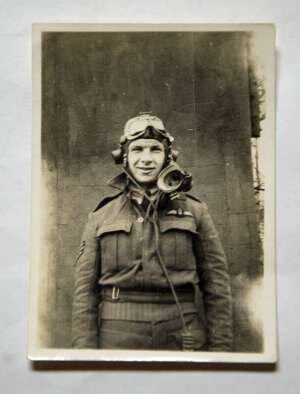
Pilot Officer Frank Johnson
When we throw stats around and list things, we need to remember the humans involved in their operation. A new replacement would need time and luck to survive on any side in a conflict. For Typhoon crews arriving in front line units in spring 1944, they would be entering a period through the coming Normandy campaign that would see some squadrons face a near 100% attrition rate. But, there were always new aircraft waiting at Maintenance Units and Group Support Unit and pilots flowing through OTUs. While the new pilots would be flying into walls of flak courtesy of the Luftwaffe’s Flakkorps, they would have been given every chance to glean insights before that terrible first experience. If they survived those early ops, their chances of surviving increased with each sortie.
On the other side of the line, survival was becoming a coin toss. With the Messerschmitt Me262 being deployed to front line units, the fright of the Fw190 in 1942 returned, albeit momentarily. While the Me262 was always a winner in Top Trumps, reading Franz Stigler’s account of his trainees being preyed upon on training flights as Mustangs and Tempests marauded around their bases waiting for any movement is heart breaking. But that is war and war is the human experience.
This long post had one point, that of trying to make you remember that every time you rank weapons of war, please remember that they only work with a person pulling a trigger or pressing a button. For every preternatural pilot like George Beurling or Hans-Joachim Marseille, tens of thousands of others were flying, fighting and dying in the cold, thin air. While giving them the best equipment was vital, equipping them for the fight was even more so. Spitfires, Mustangs and Messerschmitts, are truly incredible things, but the pilots who sat in them are what made them live. They are the ones we should focus upon as they roared into those dangerous, unforgiving skies, many to fall before they had ever really had a chance to live.
Sources and Further Reading for this post:
The Commonwealth Air Training Plan
RAF Training in the Second World War
- Pathway to Pilot – RAF Museum
- IWM Interview with John Golley – IWM Archive Reel 1
- Brotherhood of the Skies – David Ince DFC
Luftwaffe Training in the Second World War
- Spitfire on my Tail – Ulrich Steinhilper
- A Higher Call – Adam Makos with Larry Alexander
Luftwaffe in the Second World War
- Alarmstart, Alarmstart South and Final Defeat – Patrick G. Erikson
- Strategy for Defeat: The Luftwaffe 1933-1945 – Williamson Murray
Allied Air Forces in the Second World War
- Big Week – James Holland
- 609 Squadron Operations Record Book Summary of Events January 1943, AIR 27/2103/1 – National Archives
- The Story of 609 Squadron: Under the White Rose – Frank H. Ziegler
We Have Way of Making You Talk Podcast
Other
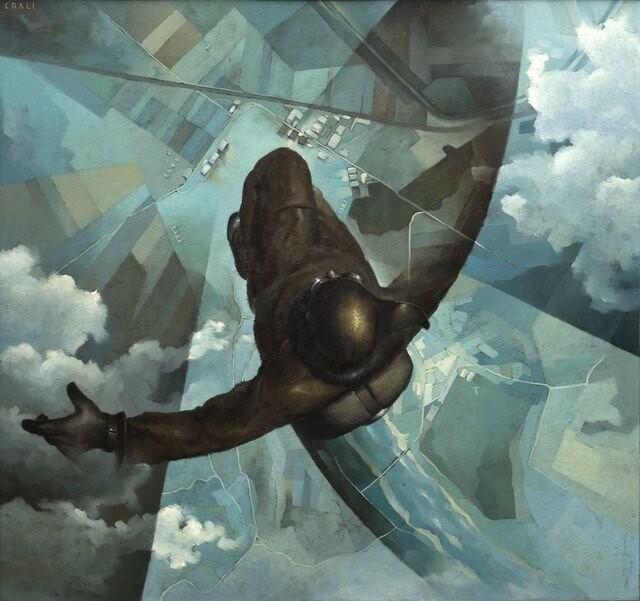
Tullio Crali – Before the Parachute Opens – 1939
